Decoding Japanese convenience store take away food: what you need to know – Part 2
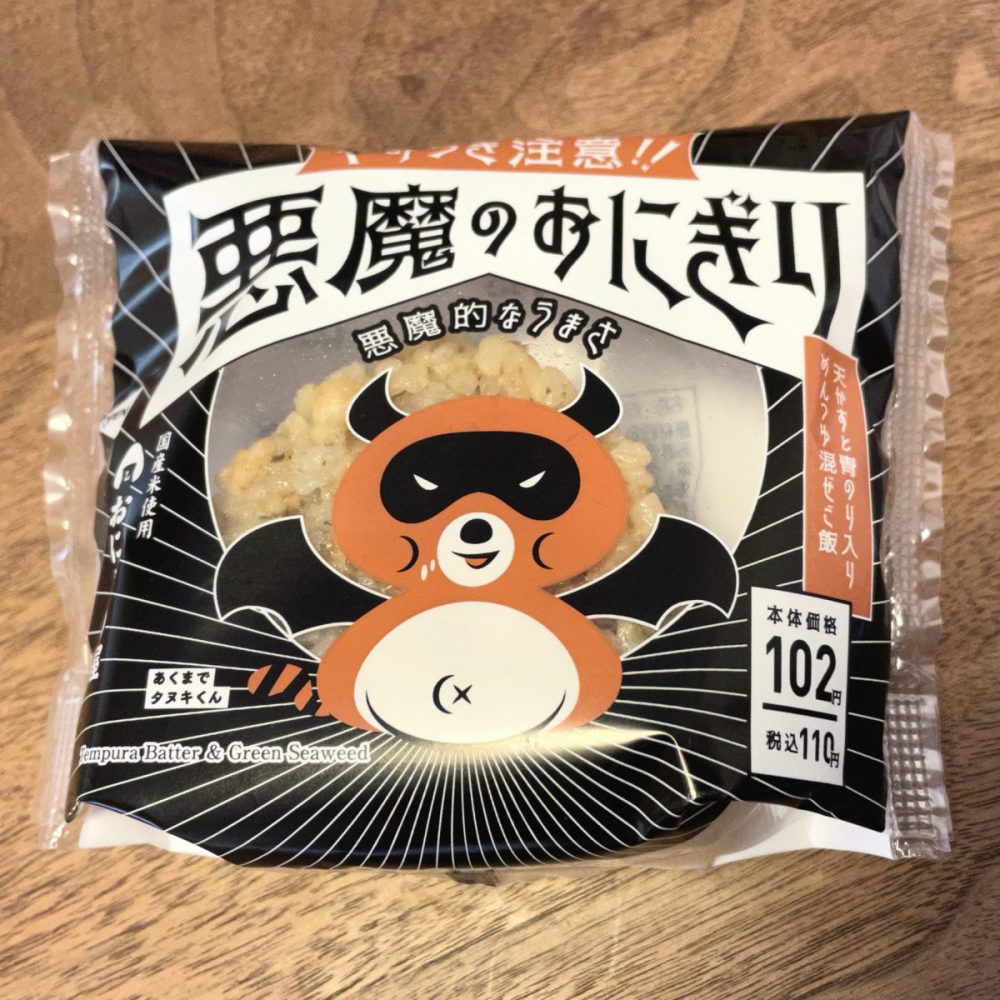
In part 2 of our series on take-away food from Japanese convenience stores, I’ll be moving away from light snacks and showcasing more authentic meals.
In Australia, we have instant noodles and sandwiches, but to be honest, they aren’t that tasty so we’d instead go to the nearest café, right? Believe it or not, in Japan, some people will go out of their way to visit convenience stores for their deli foods and meals.
Here are some of the most popular dishes available at convenience stores in Japan.
Devil’s Onigiri

Rice is the staple food of the Japanese people. That’s why onigiri, rice balls stuffed with fillings, is a very popular dish. If you like sushi rolls, you will probably like onigiri as well.
Basically, if the rice is packed in a triangular shape in the palm of your hand, the Japanese people will call it onigiri. The triangular shape represents the shape of a mountain and historically, the Japanese people believed that gods lived in the mountains, so the triangle is considered to be a sacred shape.When you enter a convenience store, you will come across a large variety of onigiri on display. One that has become popular in recent years is the “Devil’s Onigiri”.

It may be hard to imagine the taste just by the name, but it’s named after the fact that it’s so delicious, people tend to overeat it. The package has a cute character that looks slightly different from the stereotypical devil printed on it. It’s apparent that products sold at Japanese convenience stores often feature characters on the packaging.
The secret to what makes these rice balls so delicious is in the ingredients – rice cooked with shirodashi (white broth) mixed with tenkasu (crunchy crumbs made from tempura batter), tentsuyu (tempura sauce), aonori (dried green laver) and aosa (sea lettuce).
While it can be eaten chilled or room temperature, it tastes even better if you heat it up a little in the microwave.
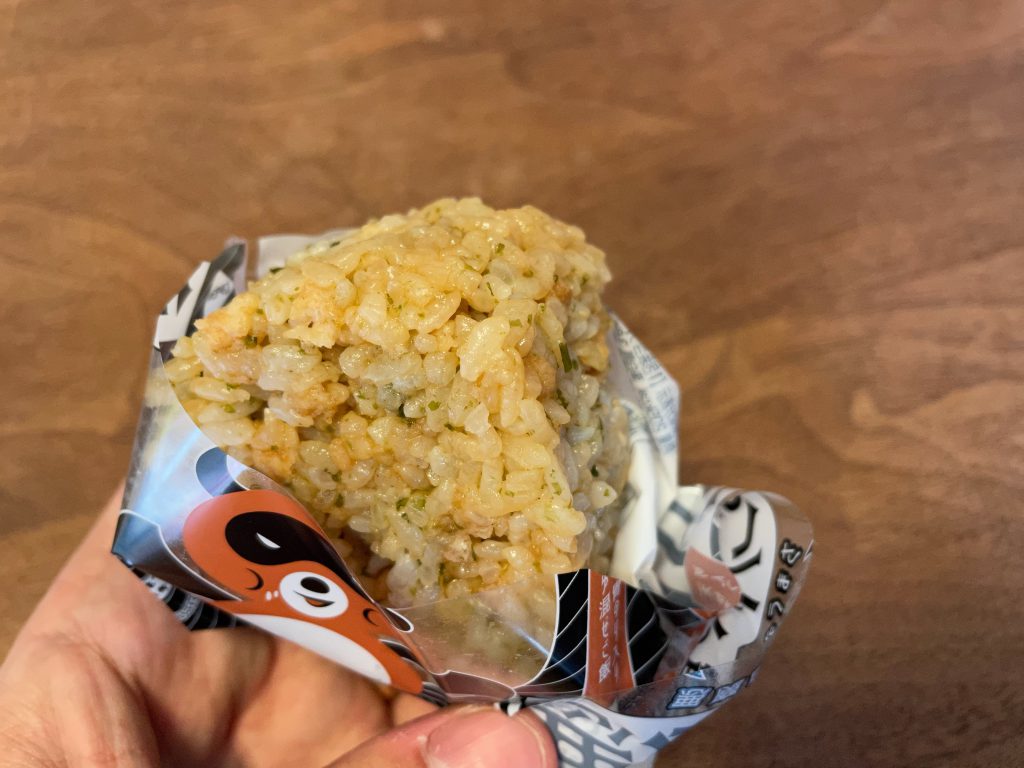
Bran Bread
One of Japan’s major convenience store chain, LAWSON, has different brands each with its own concept, including NATURAL LAWSON, LAWSON STORE 100 yen, and LAWSON MART. Today I will introduce you to NATURAL LAWSON’s Bran Bread.
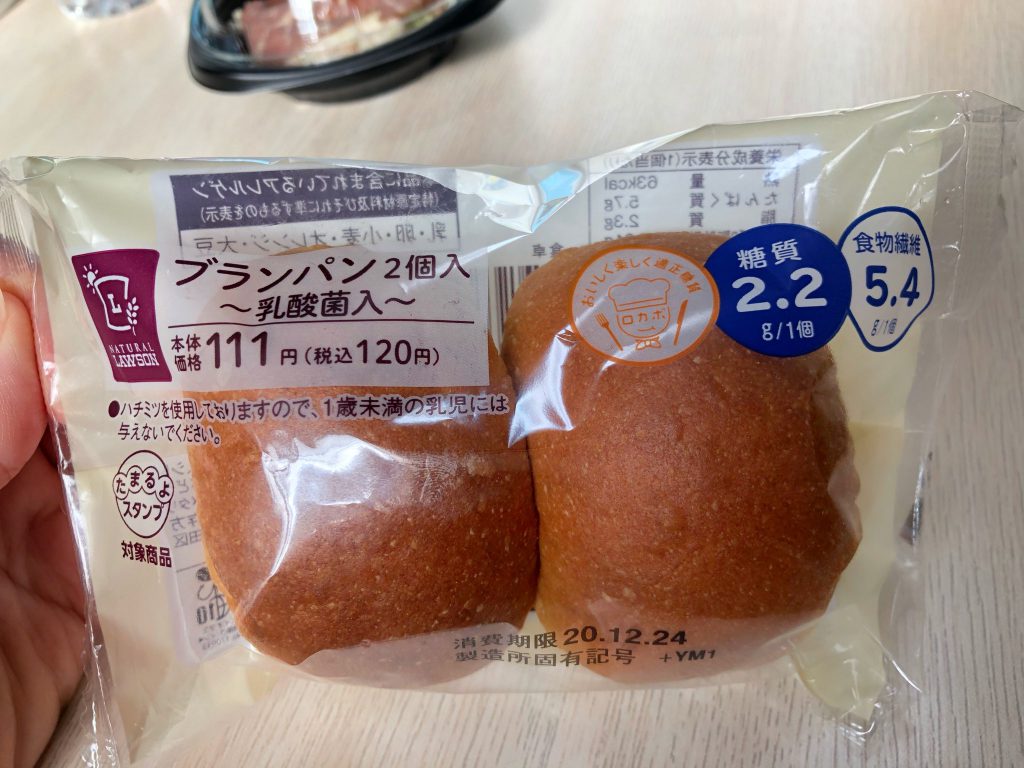
NATURAL LAWSON’s bran bread series has low sugar content, making it ideal for those dieting. It’s an excellent product in current times when people are spending more time at home. On average, regular bread rolls contain approximately 46.4 grams of sugar content, so 2.2 grams per roll of NATURAL LAWSON’s bran bread is only 5% of the usual amount of sugar content.

When you open the bag, you can smell the sweet smell of honey despite the low sugar content. The chewy dough makes it a satisfying snack. However, due to the low sugar content, it does not taste sweet on its own.
You can make a sandwich with salad and enjoy a café-like meal at home. Add NATURAL LAWSON’s roast beef potato salad (10.9 grams of sugar) to your sandwich to include more vegetables to your meal and it’ll leave you feeling satisfied.
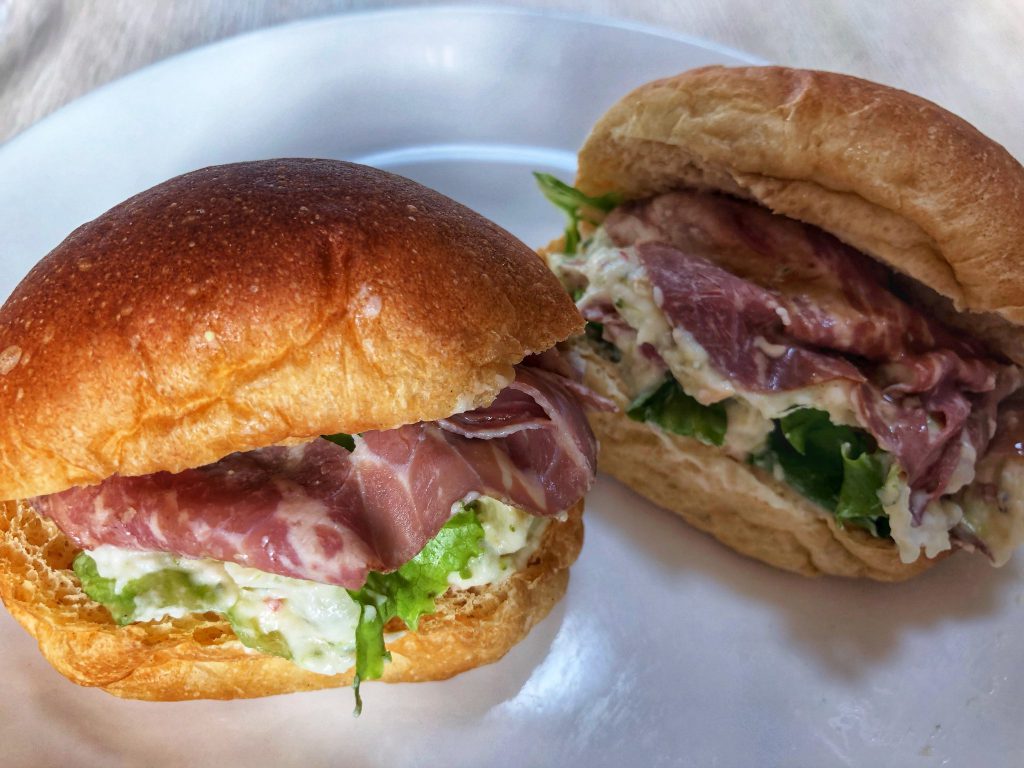
Nabeyaki Udon (Udon Noodles Hot Pot)
In Japan, the weather gets colder and winter begins to set in around November. On cold days, the temperature drops below 0 degrees Celsius and it even snows. Convenience stores sell frozen foods such as chanpon (noodle dish originally from Nagasaki, Japan), kimchi jigae (kimchi stew), and various types of nabe (hot pot) dishes that can be easily heated up at home to keep you warm during the cold months. Among these dishes, nabeyaki udon is the best choice for the Japanese winter. Nabeyaki udon originated in the Osaka area of Japan. The word “nabeyaki” derives from the way the nabe was heated in the hearth, which was once a common fixture in Japanese homes.

This nabeyaki udon, priced at 450 yen (tax included), is made using a traditional recipe, including spinach, Japanese long onion, fried tofu, fish cake, shiitake mushrooms, Japanese rolled omelette, chicken, and fish balls.
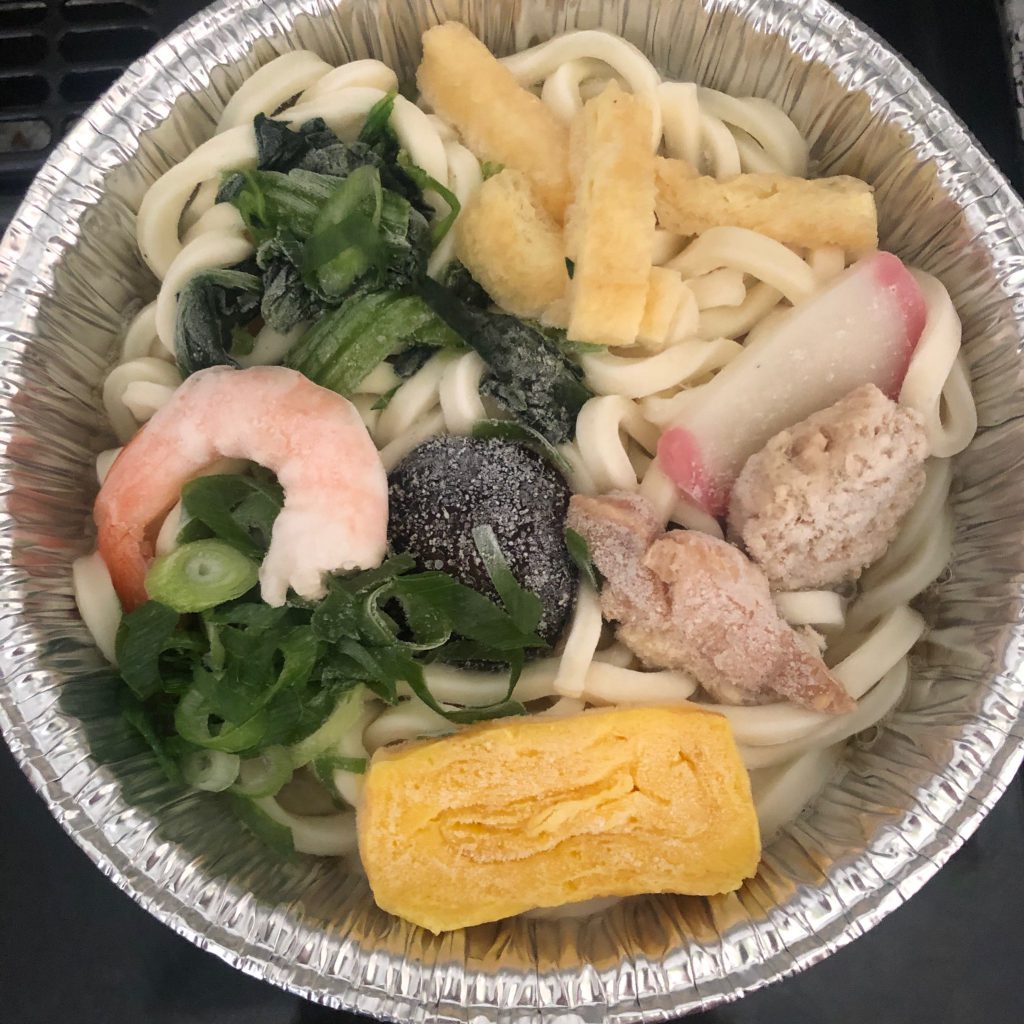
The cooking method is simple – heat it up on a gas stove or induction cooker. This time, I used the gas stove.
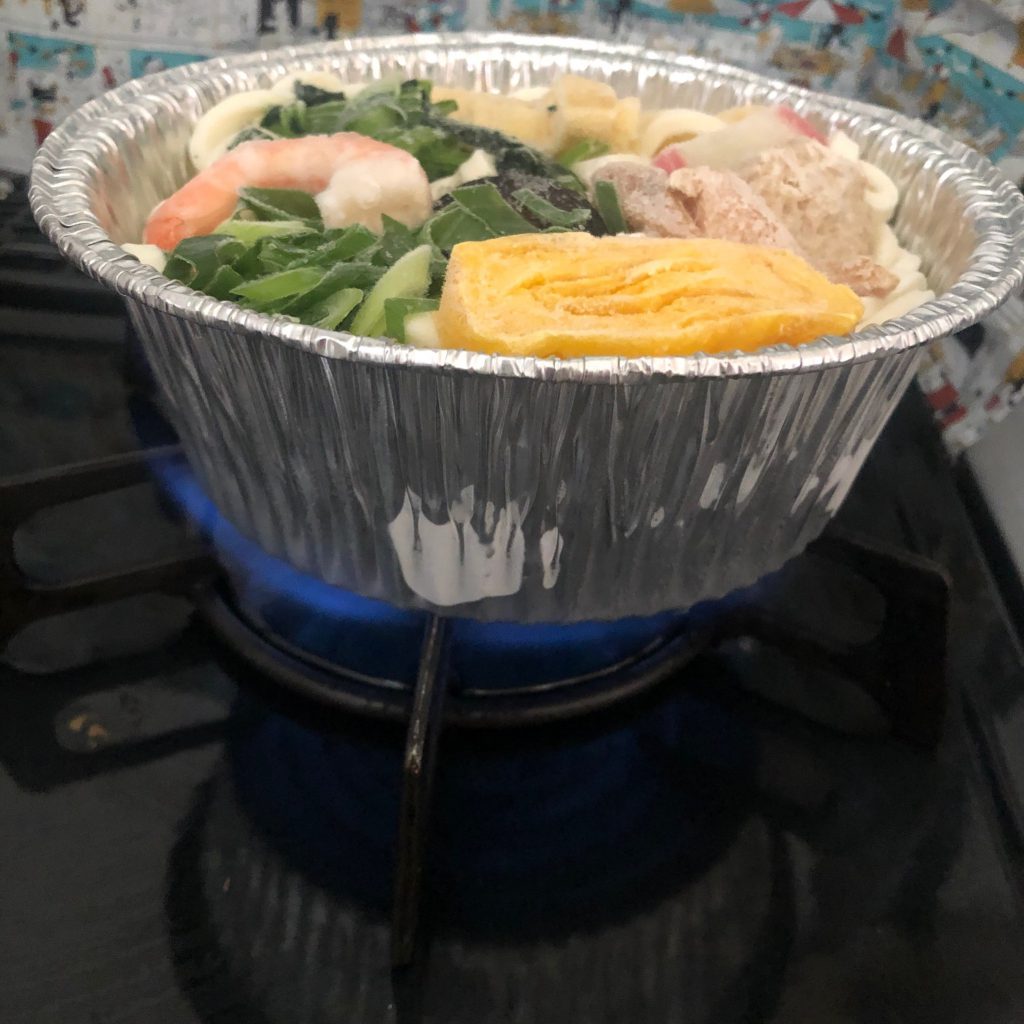
First, you place the pot on the stove and start with low heat for 3 minutes. Then change to high heat and cook for approximately 10 minutes. This may vary depending on your equipment and I ended up lowering to medium heat as I got worried. And that’s it! The nabeyaki udon was ready to eat.
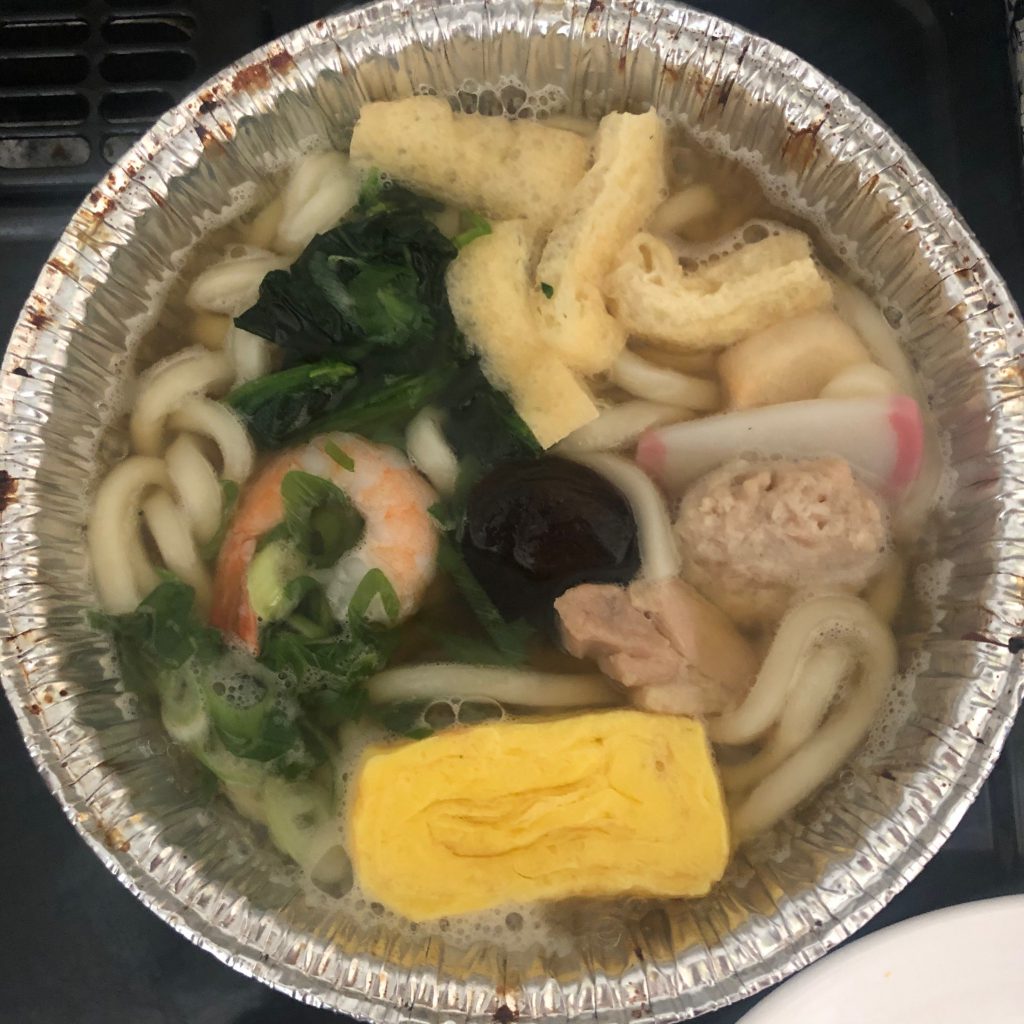
It was so colourful and fragrant, it stirred my appetite. It’s hard to believe that I bought it frozen and all I did was heat it on the gas stove.
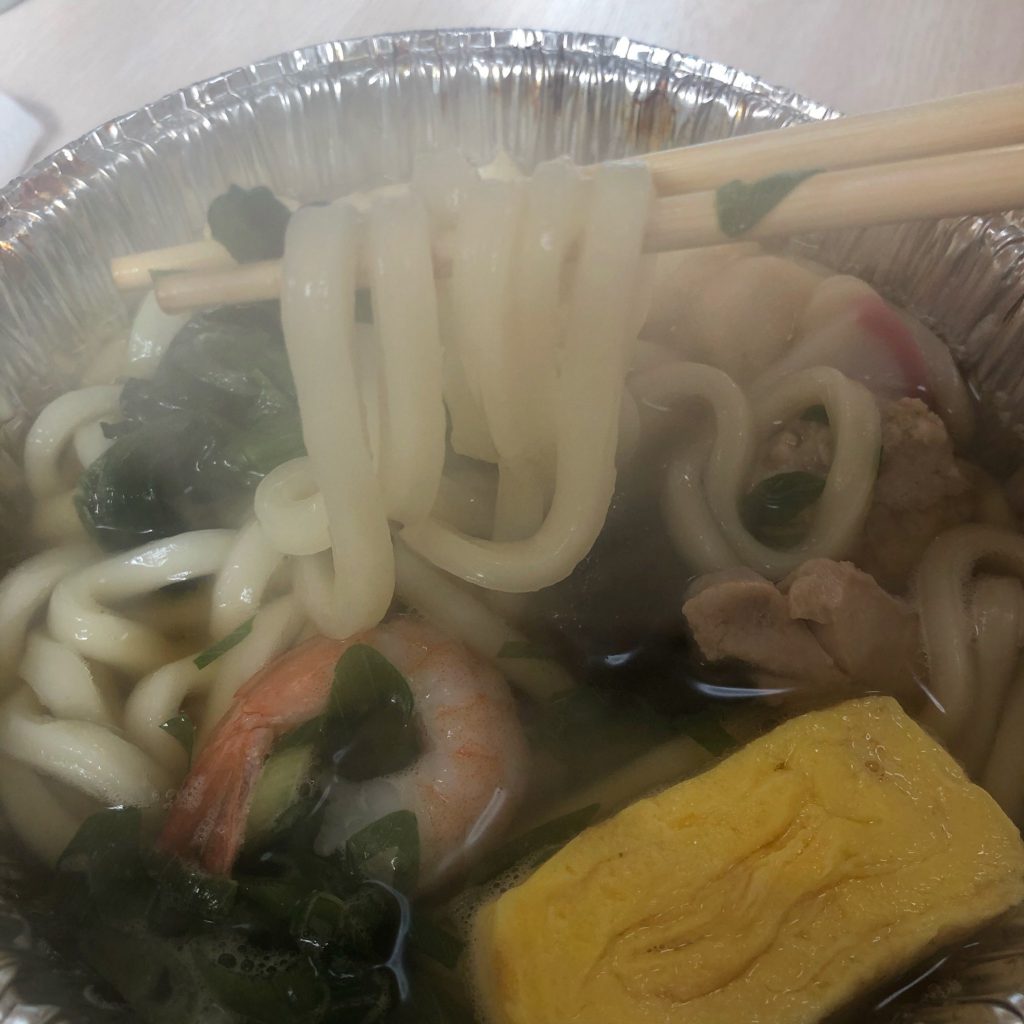
Inhaling the steam full of aroma while I sipped on the soup filled me with a sense of happiness that can only be felt when eating a hearty warm meal during the cold winter. Before I knew it, I had finished it all.
I look forward to enjoying other easy to prepare frozen hot dishes at home this year.
What do you think?
If you travel to Japan, I hope you will visit a convenience store. Even if you’ve been to a 7-ELEVEN convenience store near your home in Australia, you’ll be surprised at how different the atmosphere and products available at the Japanese 7-ELEVEN stores. If you do, I hope you’ll try some of the snacks and food I shared in this article. I’m sure you’ll be amazed at how delicious they are.
